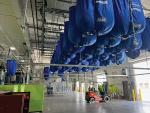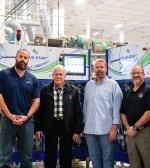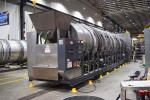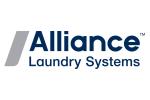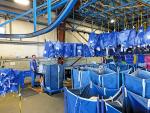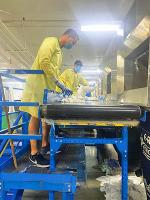TACOMA, Wash. — Keeping ahead of mechanical failure is like chasing a virtual carrot—if you were a horse.
You never catch the carrot, and it is a repetitive situation. It’s good for engineers—it keeps us employed.
Preventive maintenance is the little things we do, repeatedly, hoping to prevent or delay the inevitable breakdown.
Every plant is going to have different needs in this arena, as well as varying levels of cooperation with owners, plant managers and hours of operation.
For this article, I’m defining “preventive maintenance” as the things we can do with the plant running with minimal downtime impact or parts costs.
I wish the real world was as easy as the “scheduled on paper” world, but it isn’t, and sometimes we change the oil on our car a little later than prescribed.
The beauty of having a schedule for greasing, blowdowns, control panel vacuuming and such is that you can keep the pace a little tighter than it needs to be so that on the occasion a service interval is delayed, you have built in a safety of time.
GREASING—AND DOING IT PROPERLY
Every plant has grease guns and guys rolling around hitting zerk (grease) fittings, but there is more to it than that. Lubrication, when done right, prevents so many problems.
Grease less, but more often. This is critical.
Obviously, if you are trying to stop a squeak, you have waited too long, or you have a failure already.
Bearing seals can be pushed out with too much grease, especially with today’s cordless guns. Unsealed bushings, like on roll blocks on a sylon, are just wasting grease and potentially creating a mess.
Too often we take the newest, least-experienced technician and throw the grease gun at them with no training. “Hit the zerks on this at the end of each shift” type of stuff.
A couple pumps a day, consistently, on your dailies, or whatever the interval, should see the seal maybe weep a bit of grease without the seal failing. Once the seal is gone, you will have to over-grease constantly to push out moisture and contaminants.
This is already a failure but one you could live with temporarily until you have time to change the bearing and/or seal.
If you grease at the recommended intervals and do it right, you can get away with the occasionally missed interval that has been caused by “scheduled breakdown.”
INSPECTING DURING SERVICE
So many shafts fail because set screws have backed out or keyways have slid out. This creates a situation where the shaft will rotate at a different speed than the collar, causing shaft and race wear in a hurry.
Pointing these things out to your team and getting them to check for this can pay great dividends. Nearly every shaft failure I have seen has been caused by this, rather than breaks.
AUTO OILERS
Some of our industry uses auto oiling systems for bearings, generally triggered by a drain valve cycle or some other pneumatic means. These can be easy to overlook.
Be sure to periodically test these systems, and verify the oil is getting delivered to its target.
LUBRICATION
Lubrication is probably the simplest, easiest form of preventive maintenance.
It is also widely misunderstood.
Consult your manual or reach out to the service department for the specific machine in question.
Be sure you understand the manufacturer’s needs. They love selling parts, but they love a solid and reliable reputation even more.
In maintaining proper lubrication, you reduce wear on many systems beyond shafts, bearings and gears.
Less friction equals less load on motors, drives, belts, etc. This will build extended life into those systems, reduce utility costs, and lighten your load and stress in doing so.
CART SAFETY
I do not like carts (and that’s putting it mildly). Other than caster maintenance and cart repairs in general, carts seem to be the most destructive force known on the planet.
It’s definitely the most destructive force in a laundry. More destructive than apron strings even!
Seriously, though, fabricating and installing bollards and curbs and guards to protect equipment from carts seems to be an endless task at laundries.
Beating the cart to the touch-screen controller and E-stops is a constant challenge. Always be looking!
FREQUENCY DRIVES
These are becoming less easy to source and often can be time-consuming and painful to program on replacement.
We like to use a vacuum to pull lint and dust out a couple of times a month or every other week.
This is something that should be done every time you vacuum a control cabinet. I say vacuum because air tends to push debris deep into the drive or contactors.
This, however, is not enough—at least in my world.
Dust, and especially lint, will tightly compact itself into the heatsink fins and your frequency drive will begin to overheat. This absolutely reduces the life of these drives.
When you can power down these units for at least an hour (they have capacitors that hold stored energy in many cases), do this. Then, you can strip the drive in segments and use air in conjunction with the vacuum to remove all of this life-robbing debris.
If you have multiple repeats of the same frequency drive (I have a ton of F7 drives in my plant), then build a cheat sheet for setting parameters and keep a spare on hand.
Newer equipment tends to have integrated mini drives in the cabinet, so keeping them as dust- and lint-free as possible is very important.
Check back Tuesday for weather considerations, management communication and the importance of personal “maintenance.”
Have a question or comment? E-mail our editor Matt Poe at [email protected].






















































